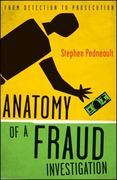Question
Please explain the following: When interest rates are low, more people will have access to debt (borrowing) and thus, their spending rises. In such, aggregate
Please explain the following:
When interest rates are low, more people will have access to debt (borrowing) and thus, their spending rises. In such, aggregate demand (the total demand in the economy at a given price level) will rise when people are able to borrow and spend. One of the consequences of prolonged low interest rates is the increase in the use of credit card debt since selling money (lending) becomes cheap. The rise in demand for credit card debt is expected to stimulate the economy as higher aggregate demand means higher aggregate supply, thus higher output and employment in the short run.
Given your knowledge about the effect of low interest rates on AD, the effect of AD on AS and employment, and the effect of access to credit on total consumption, do you think it is healthy for the economy in the long run if the household credit card debt and other forms of household debts keeps rising? Can we assume that the increase in credit card debt (which is an indication of an increase in consumption) is a path to restoring our economy to full employment?
Thank you
Step by Step Solution
There are 3 Steps involved in it
Step: 1

Get Instant Access to Expert-Tailored Solutions
See step-by-step solutions with expert insights and AI powered tools for academic success
Step: 2

Step: 3

Ace Your Homework with AI
Get the answers you need in no time with our AI-driven, step-by-step assistance
Get Started


